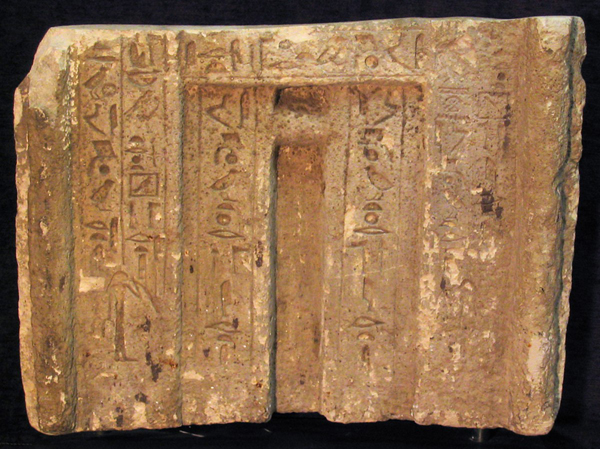Inscription & Paintings

False Door from the Tomb of a Priestess of Hathor, Irti
Egyptian
original
gift of: Dr. Robert McCorkell
date: c. 2200 BC (Old Kingdom, 6th Dynasty)
provenance: Egypt
description: Original limestone relief: lower portion of a false door with hieroglyphic inscription. Height 48.5 cm, width 65.5 cm, depth 12 cm.
Made for the tomb of a priestess named Irti of the goddess Hathor. The so-called “false doors” are a common feature of Egyptian tombs of the Old and Middle Kingdoms (2780-2280 and 2134-1778 BC, respectively). The Egyptians believed that the afterlife was similar to the life of the living. (See also: Ushabtis; Canopic Figures.) For this reason, the dead too required food for sustenance. Offerings were supplied by the descendants of the deceased or by mortuary priests. It is believed that the primary function of false doors like this one was to offer the soul of the deceased access to this world in order to receive such offerings. They are called false doors because they do not open.
There are a total of five inscriptions on this false door: the horizontal text on the lintel, two columns on the inner jambs, and four columns on the outer jambs, two on each side.
The horizontal text on the lintel and two columns on the inner jambs reads “The revered one before the great god, Irti.”
The right side jamb in two columns reads 1) “…for the revered one, Irti,” and 2) “…One connected to the royal cult, the Priestess of Hathor Irti.”
The left side jamb in two columns reads 1) “…[revered one before?] the great god and lord of the West, One connected to the royal cult, the Priestess of Hathor Irti;” and 2) “…[revered before Osiris, lord of Bu]siris, the revered one Irti.”
On the two outermost columns are two images of a human, holding a lotus and standing facing the central niche, as if about to enter the doorway.